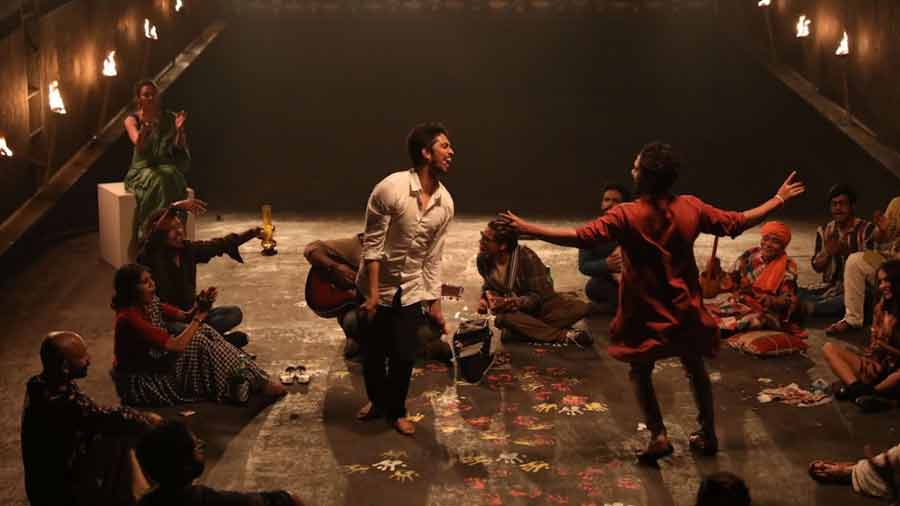“The city doesn’t make its people, it’s the people who make the city,” says Soham Majumdar, who plays Godot in Homecoming, a cinematic ode to the thespian spirit of Kolkata (streaming on Sony LIV). He goes on to add: “Just as our producer backing out of our film four days before the shoot is Kolkata, us completing the shooting within 10 days with our director doubling as producer is also Kolkata. Such is the home we all come back to, such is Kolkata.”
Directed by Soumyajit Majumdar, a self-admitted “sucker for the process of filmmaking”, Homecoming gives the impression of a canvas animated by a rainbow palette, whose multiple layers, hues and shades underline the many paradoxes of Kolkata. These paradoxes not only convert Kolkata from a setting into a character, but also serve to underscore the conflict in the lives of those (in the film) who have made Kolkata an inseparable part of their consciousness.
‘The scenes at Gyan Manch brought tears to my eyes’
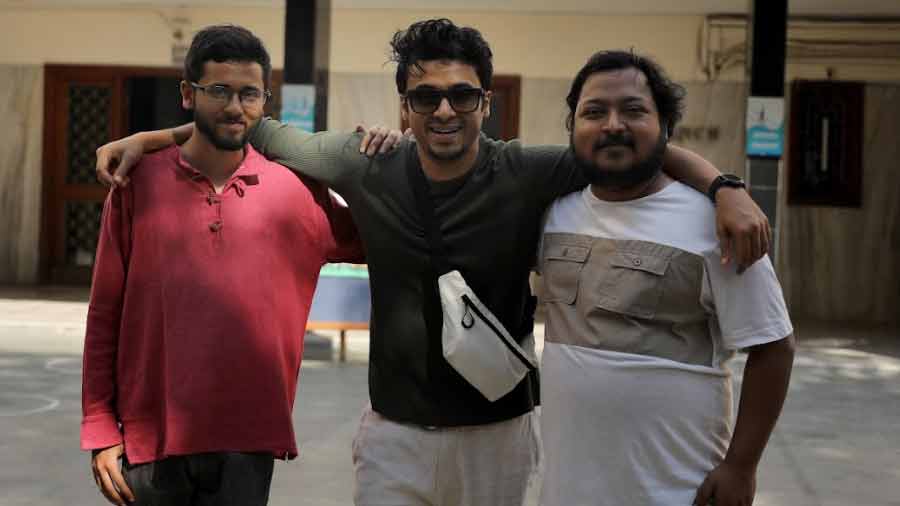
‘Homecoming’ is based on the reunion of Amra, a theatre group in Kolkata that thrives and then breaks up Arijit Sen
Premised on the reunion of Amra, a youth theatre group, during a Durga Puja house party, Homecoming’s ensemble cast makes for a somewhat scattered yet constantly compelling meta narrative – there are tales within tales, each of which brings to light how individuals, long anchored in a group, seek to discover their individual identities once their collective purpose has expired.
In an attempt to delve deeper into this meta narrative and learn more about the film that is making Bengalis, both in and outside Kolkata, re-evaluate their relationship with their city, My Kolkata caught up with the director and select cast members of Homecoming at Gyan Manch, a symbolic location in more ways than one. Not only were some of the scenes of Homecoming filmed at Gyan Manch, but for the majority of the cast, the auditorium also marks one of the chief locations of their theatre days, a place into which “we poured our mind, heart and soul.”
“The scenes shot at Gyan Manch brought tears to my eyes,” says Soham. He is seconded by Rupayan Paul, who plays Bhola in the film: “Whenever I come to Gyan Manch, all the memories come flooding back. I’ve worked in various backstage capacities for theatrical productions over the years and returning to Gyan Manch to talk about a film that documents Kolkata’s theatre culture is really special.”
From Subhas da’s Maggi to ITC’s spaghetti
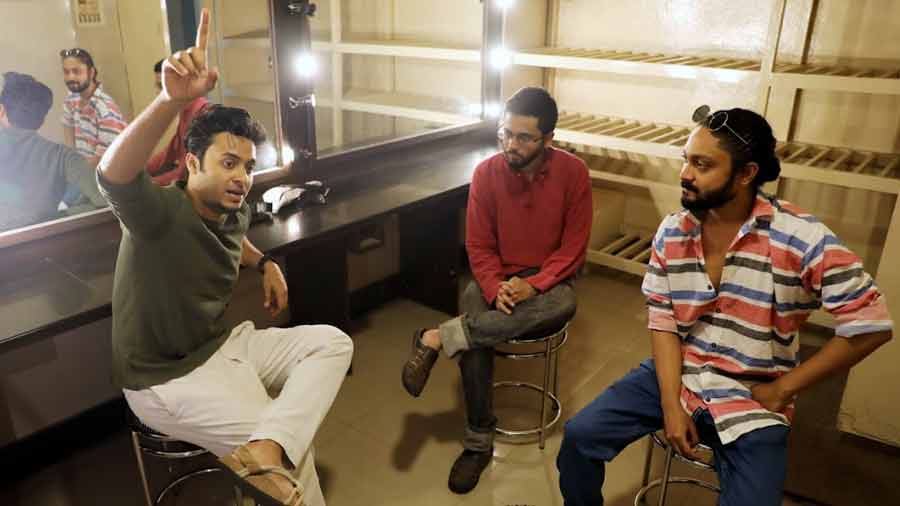
A majority of the cast of ‘Homecoming’ was involved in Kolkata’s theatre productions during the 2010s Arijit Sen
For Gautam Siddhartha and Anirjit Hore, essaying the characters of Sandy and Yash, respectively, Gyan Manch is evocative of a blissful time in their lives. “It makes us think of the days of fest rivalries over plays, staging shows at the drop of a hat, changing costumes at jetlike speed and changing our dialogues even faster! That’s how the theatre of Kolkata looked for us in the 2010s.”
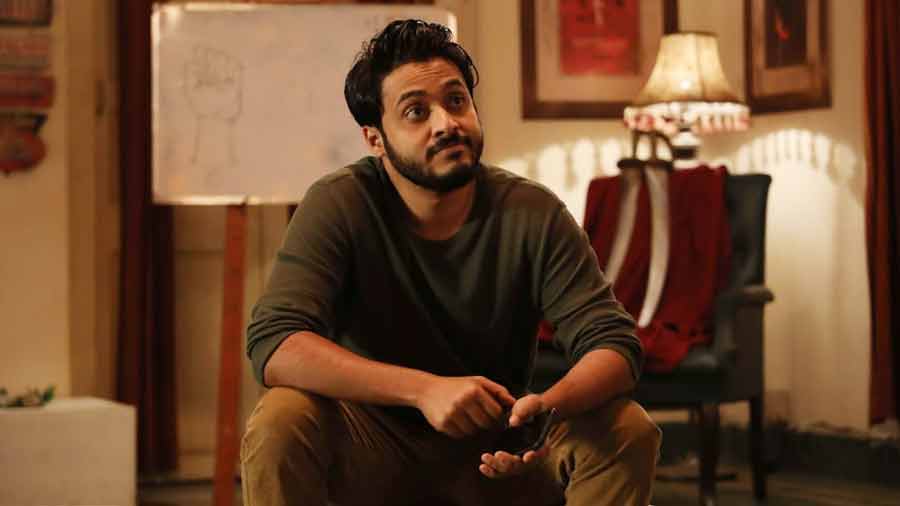
‘I haven’t done a nine to five job, but I understand how it can erode you from the inside,’ says Soham, who plays Godot in 'Homecoming'
But the theatre groups they were a part of in Kolkata also offered the familial comforts of empathy, support and kindness. “We could all chill together on evenings, smoking, drinking and eating, talking about life and watching it pass by. I remember having fried Maggi practically every day after rehearsal at this place called Subhas da’s (in accordance with Kolkata’s peculiarities of nomenclature). Over time, many want to replace Subhas da’s Maggi with ITC’s spaghetti, but the latter isn’t always better. Kolkata allows you to understand that,” says Soham. The camaraderie, as depicted by Soham, is evident among the members of Amra in Homecoming, though not without its share of strains.
‘Homecoming’ has no story or plot, just characters and their arcs
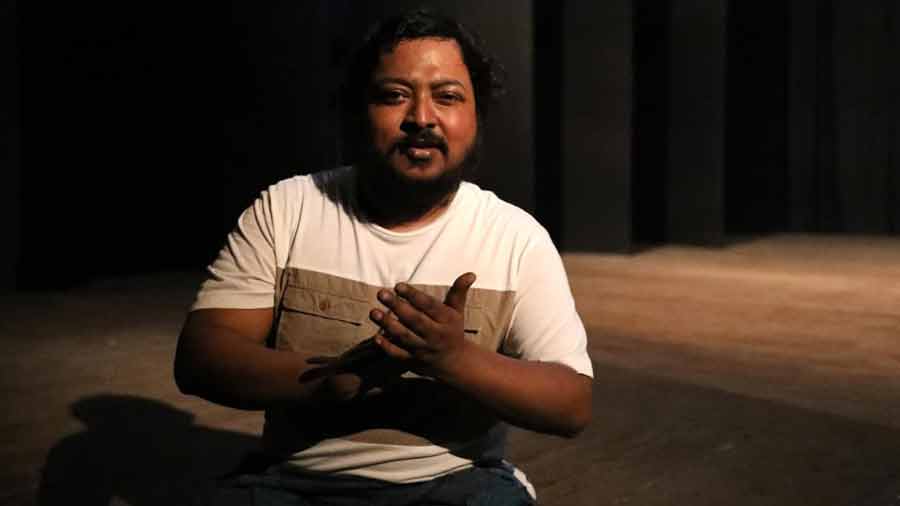
Characters, not stories, constitute the heart of a film, argues Soumyajit Arijit Sen
“I like being in the moment, which is why Homecoming is essentially the documentation of a single night (when the members of Amra reunite) where there is no story and no plotting, just characters taking off in their own arcs. I don’t believe in storytelling in cinema, for I see cinema’s role as that of representing characters,” explains Soumyajit, providing a neat encapsulation of his directorial vision. Perhaps inadvertently, Soumyajit’s philosophy is also a rebuttal to critics who insist that a movie must be seen as a whole, imbued with narrative coherence, and not as an aggregation of personal journeys welded together by the appealing arbitrariness of life.
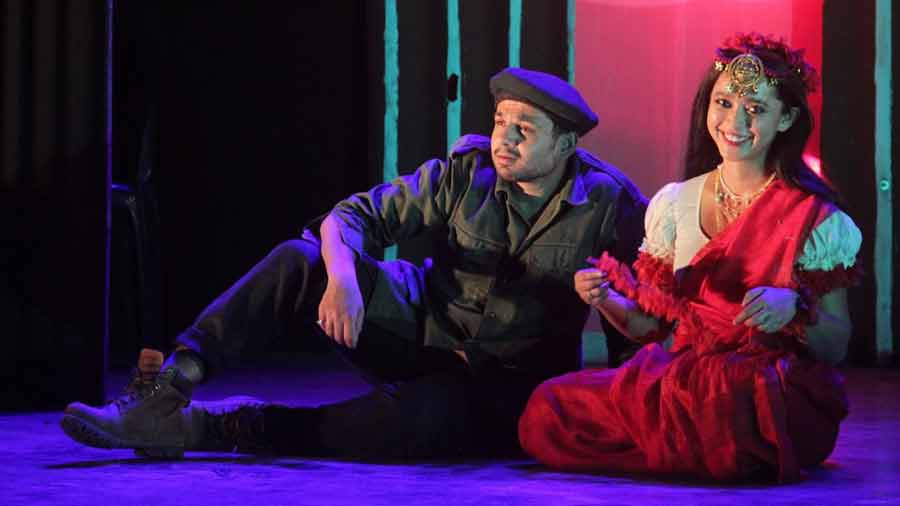
Imroze and Sri as seen during the shooting of ‘Homecoming’
Take the journeys of Sri (Sayani Gupta) and Imroze (Hussain Dalal); two lovers who cannot quite locate themselves on the romantic spectrum between prem and bhalobasha. “Their equation sums up the isolation of an alienated, urban generation who think they’re never ready to commit in love. In their own ways, they are misfits,” describes Soumyajit.
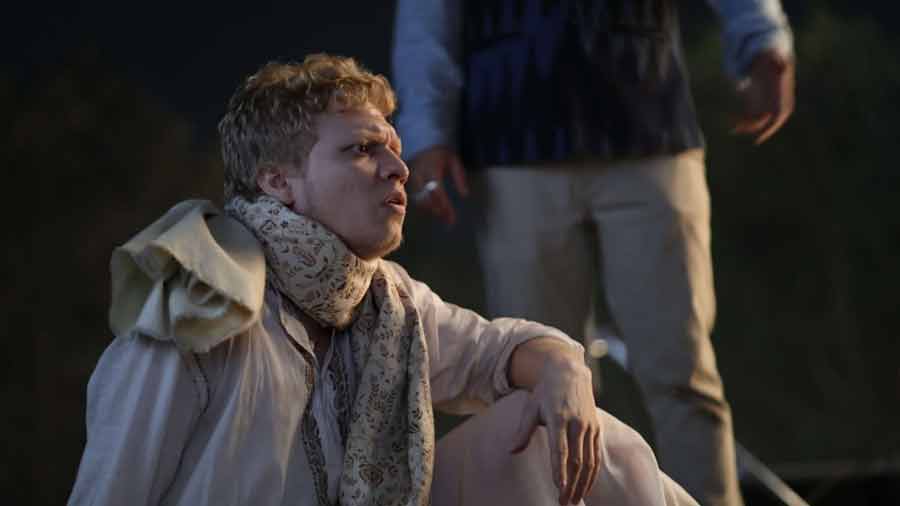
Papai is one of the notable misfits in ‘Homecoming’
Misfits are among the few things Homecoming celebrates, remaining rather agnostic about everything else, from the ambition of artprenuers (artists desperate to commercialise their own art) to the zeal of poets who can dissect Kolkata but cannot change it. One such misfit is Papai (Subhra Sourav Das) who, in the words of Gautam, “helps bind the film” together. “There is this scene where Papai is drunk and going bonkers, flooded with nostalgia for Amra. He accuses the others of leaving while portraying himself as the only one who tried to stay. He’s a misfit because when the circumstances change, he can’t move on.” Or, as Soham adds: “Maybe he doesn’t want to move on. Every group has people like Papai.”
Kolkata has a lot of potential but disagrees with it

Soumyajit communicates instructions on the sets of ‘Homecoming’
Kolkata may have a fair few Papais, but it also has people who have moved on, only to be swayed to return. “After the film came out, a friend of mine who hadn’t been in touch for close to eight years called me to say that he is leaving his job and coming back to Kolkata to revive his canteen band at Presidency University. When you hear things like these, you feel good, you feel that the film is making a difference. Of course, I’m not asking people to quit their jobs! But I hope Homecoming can help them get back to their roots,” narrates Soham.
Soumyajit echoes Soham in his own way when he calls Kolkata “a time machine”, one that can persuade you into thinking that “there’s no rat race in the world today”. But is that not what leads Kolkata to being derided as a lazy city by the hyperproductive?
“Kolkata is lazy, and it can’t help itself,” says Anirjit. “But Kolkata has a soul, you see. Not many Indian cities can say that,” chimes in Rupayan. “Kolkata has a lot of potential but disagrees with it,” opines Soham, before Soumyajit concludes the tangent started by his own comment by adding that “lazy or not, Kolkata is conducive for thought, which is why we need more films that can probe the psyche of its people.”
'Homecoming' neither upholds nor contests the cliches about Kolkata

(L-R) Soumyajit Majumdar, Gautam Siddhartha, Soham Majumdar, Anirjit Hore and Rupayan Paul reminisce about their theatre days at Gyan Manch
Naturally, there is a considerable amount of psychological probing in Homecoming. The character of Shubho (Tushar Pandey) is a testament to that, meandering through the film in search of the mindscape along Kolkata’s cerebral horizon where he can come to terms with who he really is. On the other hand, Nargis (Plabita Borthakur) seems to have completed her probing halfway through the film, convinced that she is ready to put a pause on living out of a suitcase to immerse herself thoroughly in the subtle charms of Kolkata.
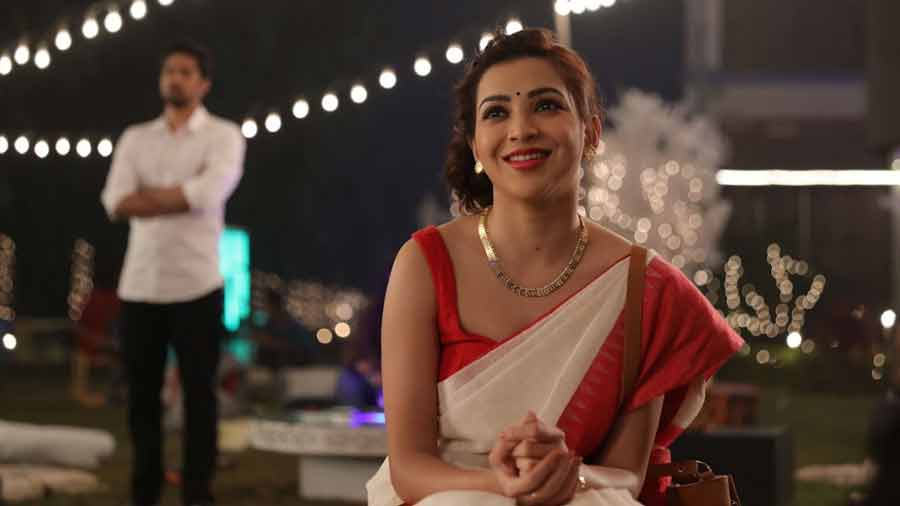
Nargis lends an inveterate optimist to Homecoming as she immediately falls in love with Kolkata
It is these subtle charms of Kolkata that turn addas into epiphanies and make Homecoming what it is, a film that does not try to prove anything to anybody. It neither upholds nor contests the cliches about Kolkata. It neither champions nor denigrates the paradoxes that shape the city. All it does is create the right environment where Kolkata, and the kind of people who make the city, are invited to reveal themselves, without judgement.
